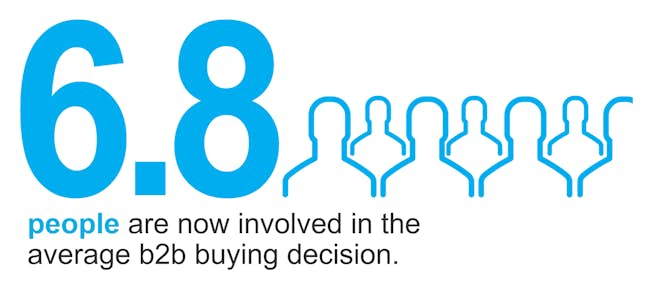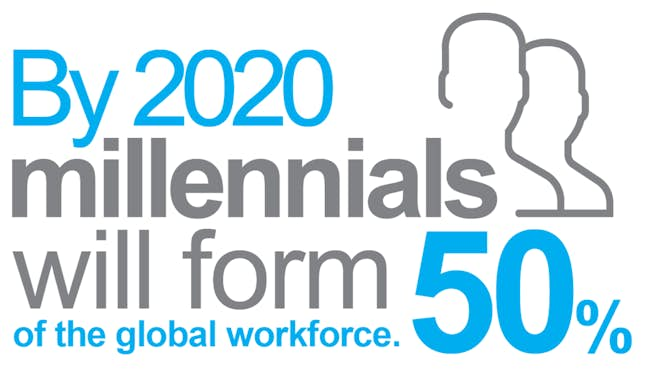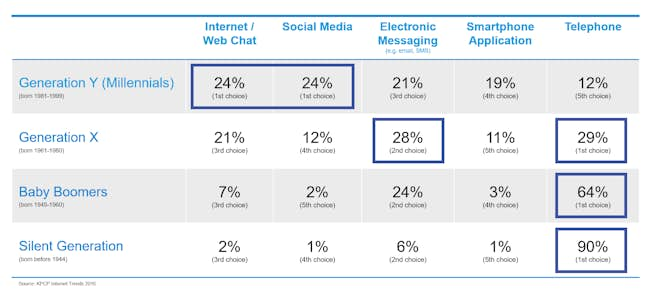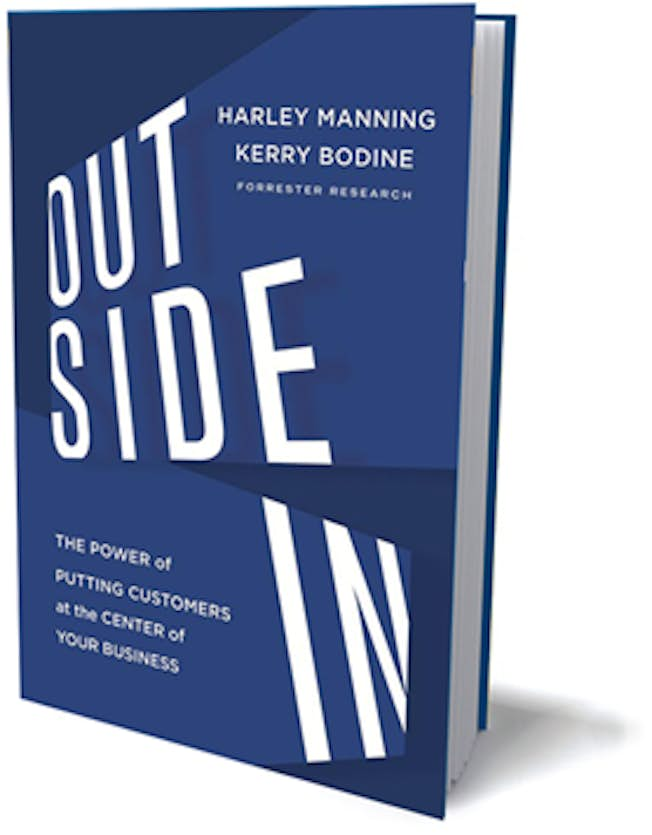Back in 2013, I built and launched what has become a highly successful digital and social selling program at Pitney Bowes. When starting out, I was educating program members around social media best practices, etiquette, and, ultimately, how to apply these tactics to develop business opportunities.
As time has moved on, the sales process has become more complex, with an increasing number of individuals involved in the average decision-making process; as a result, sales and marketing professionals are now required to take a more innovative approach to ensure digital sales success.

So, allow me to share some of these innovative tactics – alongside some practical insights on what I’ve implemented – as ideas of how to take your digital and social selling initiatives to the next level.
Before I share these ideas, I’d like to reflect on the changing business landscape, as this dictates the necessity to change and adopt a new, innovative approach.
There was a time where a salesperson held the keys to the kingdom in terms of having access to all the information around a product, service, or a solution such as datasheets, brochures, case studies, analyst reports, use case scenarios, or competitive benchmarking.
All of that information is now readily available online and so, when a process of engagement does occur between a buyer and salesperson, it’s frequently a conversation around pricing and, if applicable, licensing. Let me also highlight the fact that 75% of B2B buyers now use social media to be more informed on vendors and they are on average 60-70% of the way through the buying process before any engagement takes place.
Most important of all is the fact that by 2020, 50% of the global workforce will be composed of Millennials or, as some refer to this demographic, Generation Y (those born between the early 1980s and the late 1990s).

Stop for a moment and think about that; at the time of writing this, 2020 is less than two years away. These are the folks who have grown up with a mobile device pretty much glued to their hands, and they spend most of their waking hours interacting with friends and family members through this device via numerous social platforms, messaging apps and chatbots.
I have an 18-year-old daughter who falls in this category. My wife will call her to ask a question such as, “What time will you be home?” – the vast majority of the time, the call goes through to voicemail. By way of a response, my wife will receive a text (SMS) or WhatsApp message.
Mary Meeker’s 2016 Internet Trends report – for Kleiner Perkins Caufield & Byers (KPCB) – reinforced this by highlighting the fact that new generations of customers prefer different channels of interaction.
As you can see from the image below, Millennials prefer web-based chat and social media above what I’d class as being the more ‘traditional’ channels.

My point? Well, these are the folks – the Millennials – who you are most probably going to be dealing with on a daily basis, if you’re not already! It’s time to change your mind-set and embrace these new channels and a new way of engagement.
Now that we’ve defined the existing landscape, let’s get back to main topic of this blog: winning digital and social selling tactics.
The easiest tactic is identifying your prospect, monitoring his or her activity on LinkedIn, and, when the time is right, engaging with a post by commenting. If you leave your comment open-ended (so, not a closed question or response) this is usually enough to prompt the individual to respond, and hence you’ve opened up a dialogue.
However, allow me to share some examples of other, more innovative approaches, beginning with a personal favorite – one I’ve used on a number of occasions.
The ‘Tradigital’ Tactic
Let me first explain what I mean by ‘tradigital’. While we’re all very much geared towards digital marketing concepts, I still believe there is a place for what I class as ‘traditional’ marketing methods such as direct mail and printed material, hence the fusion of digital and traditional techniques: ‘tradigital’.
I was working with a small software sales team based in Stockholm, Sweden, which was planning a business breakfast and seminar on the theme of customer centricity to promote Pitney Bowes’ range of customer experience and customer engagement solutions.
The team was targeting senior marketing executives – such as chief marketing officers (CMOs) and marketing directors – of large enterprise organizations from the financial services, banking, insurance and telco sector. We were looking to attract around 35 individuals to this small, intimate event. To begin, we identified the target audience using LinkedIn Sales Navigator’s ‘Lead Builder’ feature. Searching through the results, we refined our list to tier one, two and three targets, tier one being those we prioritized.
We reviewed each individual’s LinkedIn profile and then looked up the company’s physical mailing address. A quick phone call confirmed if the individual was located in that office.
We then implemented the traditional marketing approach by mailing a copy of ‘Outside In: The Power of Putting Customers at the Center of Your Business’, a book written by two Forrester Research analysts, to each of the targets. The theme of the book was customer centricity, the same as the seminar.

Along with the book, a printed invite to the seminar was included: “As a senior marketing individual with a core focus on customer retention, we thought you may be interested in the enclosed book; if you’d like to learn more ways to retain your existing customer base and how to build a customer centric organization we’d be delighted if you could join us at our breakfast seminar.”
Four to five days after having mailed the book and invite, we returned to the digital component of the campaign by following up with each individual via LinkedIn – a simple outreach to enquire if they’d received the book and invite and if they’d be interested in attending.
The results: we were successful in attracting two CMOs and a vice president of marketing to the event, we also secured additional meetings (either face to face, or phone calls) with four other individuals who were unable to attend the seminar due to prior commitments.
The Event Attendee
This tactic is straightforward but highly effective. If you’re attending an event, either as a delegate or as a sponsor or exhibitor, there are a number of activities you can undertake in order to arrange on-site meetings with key targets.
Firstly, check to see if the event has a dedicated LinkedIn group – if it does, go ahead and join the group. You don’t necessarily have to participate in group discussions – although it’s a good idea to do this in order to build your credibility, personal brand and, at the same time, position yourself as a subject matter expert – but, what many folks don’t realize is that by joining a group you have the ability to send a direct message to any fellow group member, even if you’re not connected to them.
Do your research on the individual and the company he or she works for, then craft a simple message to enquire if he or she is attending this year’s event and would like to meet for coffee, as you’d like to learn about his or her role and some of the initiatives his or her company is undertaking (which you should find out via our research.)
The Event Delegate List
Another tactic around events is to simply contact the event organizers and request a copy of the delegate list from the previous year. Most organizers are happy to provide this; sometimes it’s even available to download via the event website. The delegate list is usually made up of a job title and company name, and by carrying out a simple search using the LinkedIn search engine, in most cases you’ll be able to identify who these individuals are.
Once again, a simple message enquiring if they are attending the event once again this year and building in a request to learn more about their role or a particular initiative their company is undertaking can lead to arranging an on-site meeting. Please note, you must do your research on the individual and company upfront and take a very informal approach when looking to engage.
Using LinkedIn PointDrive Around Events
To briefly explain, PointDrive is a feature of LinkedIn Sales Navigator solution; it enables you to build, package, share and track an interactive presentation with customers and prospects in a professional and highly engaging way.
Last year I built a PointDrive presentation for some colleagues who were attending an ecommerce event in Copenhagen, Denmark. The strategy we devised was to send the PointDrive to any event attendees we spoke with on our booth. In most cases, once a conversation on the booth has ended and the individual walks away, the first thing he or she tends to do is check his or her phone for new emails. This is the optimal moment to send the individual a follow up with further information relating to your conversation.
Given that you have noted this person’s email address from an attendee badge or received a business card, you now have his or her contact information. With the PointDrive presentation built and the unique link generated and stored on your mobile phone, you can send that email straight away – in doing so, it will be at the top of the individual’s inbox. It also beats waiting for a post-event email to be created and deployed to everyone you engaged with!
If the individual opens the email and clicks the link to view the presentation, you will be informed; more importantly, if they forward the email to a colleague who in turn clicks the link to view the presentation, you’re also informed who the colleague is and what action he or she has taken. It’s a great way of building up a picture of who is involved in the decision-making process.
The result of this tactic from the event in Copenhagen? Having engaged with around 50 attendees, 30 were deemed hot prospects and sent emails containing the PointDrive link. Three of these prospects have since developed into sales opportunities; and in one case the PointDrive has revealed to us all the key decision-makers we need to be engaging with at the account. This particular case has since progressed through the sales funnel and is expected to close in Q4 2018.
Geotargeting
This tactic, which once again revolves around an event, combines the power of Facebook advertising and its geotargeting feature, and LinkedIn PointDrive. A tried and tested formula, this tactic has enabled Pitney Bowes to target a highly specific audience of people who are in close proximity – a one-mile radius – to the venue of an event; in this case, Henry B. Gonzalez Convention Center, located at 900 E. Market St, San Antonio, TX 78205.
The Facebook ad links through to a LinkedIn PointDrive presentation, which contains an offer for registered attendees to visit the Pitney Bowes booth. This tactic, which we’ve used on a number of occasions, has been highly successful in driving booth traffic and helping to generate sales opportunities.
Keyword Searches
The final tactic I will share is that of performing keyword searches on the network which your target audience uses. For example, Pitney Bowes, where I work, is synonymous with the franking machine. I frequently conduct keyword searches within LinkedIn’s search engine to look for posts containing the keyword ‘franking machine’.
Among the results are opportunities that I deem as ‘low hanging fruit’, individuals who are raising their hands to say they are looking to purchase a franking machine. Having identified these posts, the next step is to view the individual’s LinkedIn profile, undertake some brief due diligence of his or her company, and then look to make contact either via phone or through LinkedIn.
Conclusion
I hope that some of the tactics outlined provide you with new ways to take your digital and social selling initiatives to the next level. Whether it’s using one social network or a combination, fusing traditional and modern digital techniques, or undertaking some simple social listening, you’ll find a tactic that can help drive sales opportunities in today’s ever-changing business landscape.
Upgrade to Power Membership to continue
your access to thousands of articles, toolkits, podcasts, lessons and much much more.
Become a Power Member- Login
- View Courses
- - - -
- Courses
- Resources
- - - -
- My Account
- Change Password
- Logout





